Having worked in the commercial kitchen equipment industry for over 15 years, I’ve spent countless hours in bustling restaurant kitchens, troubleshooting everything from burner issues to cooking techniques. One complaint I hear often from chefs and kitchen staff is about oil splattering when stir-frying on commercial induction cookers. It’s messy, wastes oil, and can even pose safety risks. If you’re dealing with this issue, you’re probably wondering what’s causing it and how to fix it. Drawing from my experience with induction technology and real-world kitchen challenges, I’ll break down the reasons behind oil splatter and share practical solutions to keep your stir-frying smooth and clean.
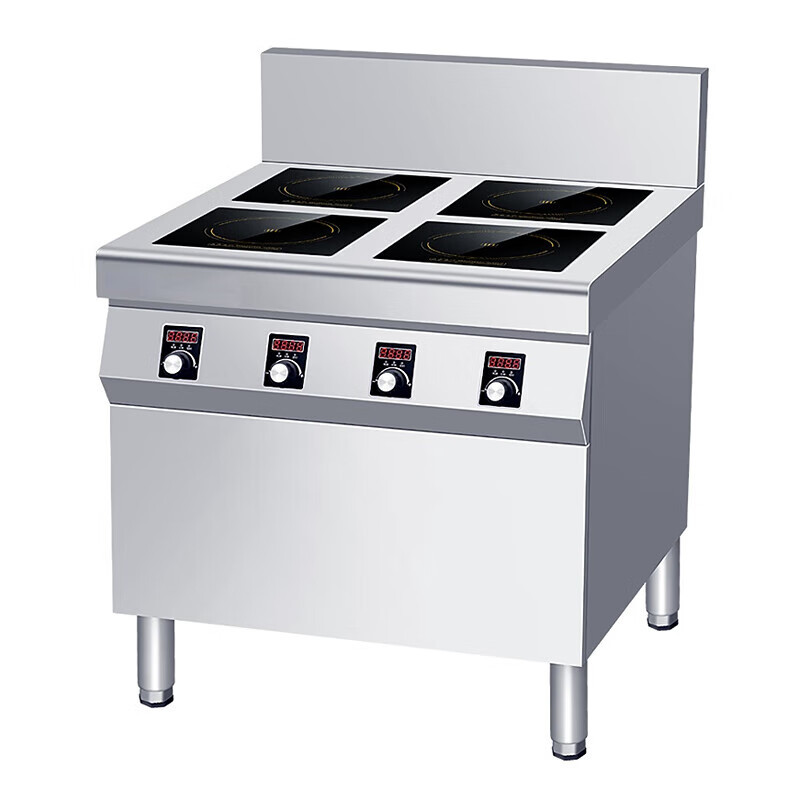
The Reality of Oil Splatter in Commercial Kitchens
Stir-frying on a commercial induction cooker is a high-energy process, especially in busy restaurants where woks are constantly sizzling. Splattering oil not only creates a mess but can also burn staff, damage equipment, and affect food quality. I’ve seen chefs frustrated by oil-soaked countertops and slippery floors, and I’ve worked with them to pinpoint the culprits. The good news? Most causes of splatter are fixable with the right adjustments.
How Commercial Induction Cookers Work
To understand why oil splatters, let’s first look at how commercial induction cookers operate. Unlike gas burners, which heat through flames, induction cookers use electromagnetic fields to directly heat the cookware. This results in rapid, precise heating, making them ideal for the fast-paced demands of stir-frying. However, this intense heat can amplify certain issues, like oil splatter, if not managed properly.
Commercial models, often rated at 3500W to 5000W or higher, deliver significantly more power than home units, heating woks to extremely high temperatures in seconds. This power, combined with the unique dynamics of stir-frying, sets the stage for splatter if conditions aren’t optimized.
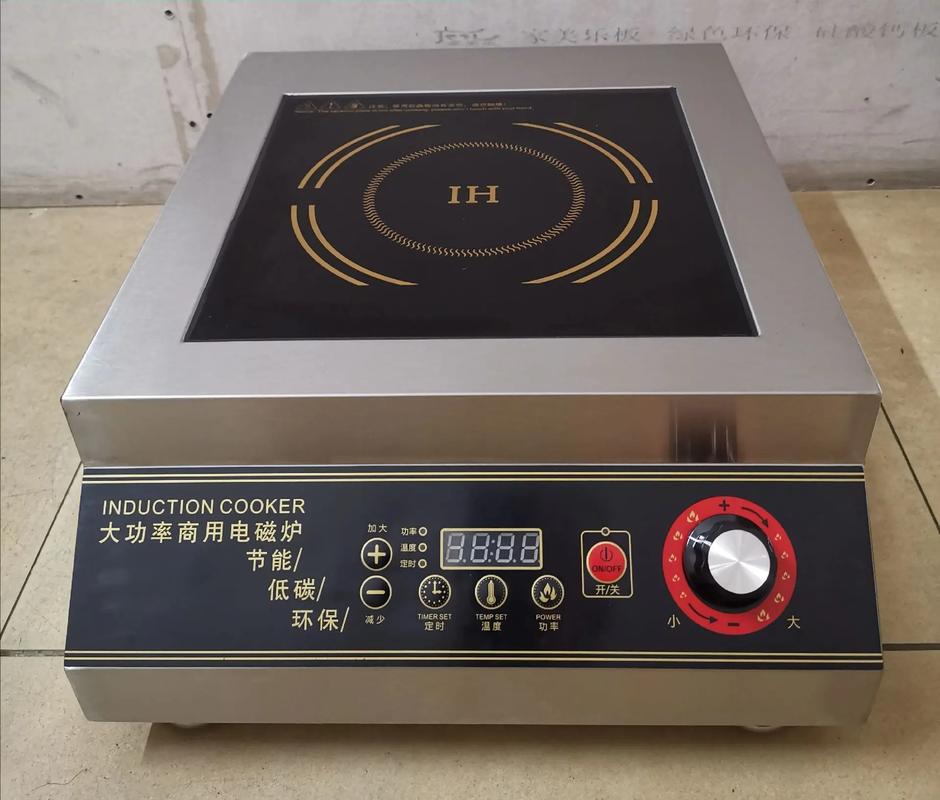
Key Reasons for Oil Splatter
After years of observing kitchens and consulting with chefs, I’ve identified several factors that contribute to oil splattering on commercial induction cookers. Here’s what’s likely happening in your kitchen:
1. Excessive Heat Settings
Commercial induction cookers are powerful, and it’s tempting to crank them to max for that wok hei (the smoky flavor from high-heat stir-frying). However, overly high heat causes oil to reach its smoke point quickly, leading to rapid vaporization and splatter. For example, peanut oil, commonly used in stir-frying, has a smoke point of about 450°F (232°C). If your wok exceeds this, the oil breaks down, spitting violently.
I’ve seen this in action: a chef in a dim sum restaurant was using full power (5000W) for every dish, resulting in oil splatter across the kitchen. Dialing down to 70–80% power for most stir-fries reduced splatter without sacrificing speed.
2. Wet Ingredients or Cookware
Water and hot oil don’t mix. When wet ingredients—like freshly washed vegetables, marinated meats, or even a damp wok—are added to hot oil, the water turns to steam instantly, causing explosive splattering. In busy kitchens, it’s easy to skip drying ingredients or the wok, but this small oversight can create a big mess.
One client, a noodle shop owner, complained about splatter during peak hours. We found that their prep team wasn’t thoroughly draining marinated beef. Using a colander and patting ingredients dry cut splatter significantly.
3. Improper Wok Size or Material
The wok’s size and material play a huge role in heat distribution and oil behavior. Undersized woks on large induction burners lead to uneven heating, with hot spots that cause oil to splatter. Similarly, non-induction-compatible woks (like aluminum) or thin carbon steel woks may not heat evenly, exacerbating the issue.
Commercial induction cookers work best with ferromagnetic woks, like carbon steel or cast iron, with a flat base to maximize contact with the cooktop. A wok that’s too small for the burner wastes energy and creates splatter-prone hot spots.
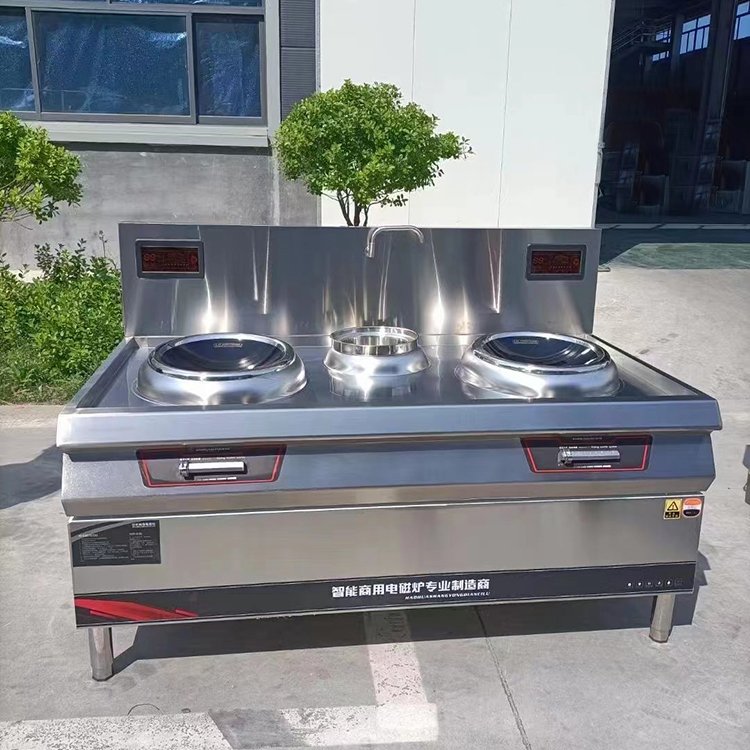
4. Overfilling the Wok
In high-pressure kitchens, it’s common to overload the wok to keep up with orders. However, overcrowding lowers the wok’s temperature, causing ingredients to steam rather than sear. This releases moisture, which mixes with oil and triggers splatter. Overfilled woks also make it harder to toss ingredients evenly, leading to more oil flicking out.
I once worked with a stir-fry restaurant where splatter was a daily issue. Reducing batch sizes by 20% allowed for better heat control and cut splatter noticeably.
5. Incorrect Oil Quantity
Using too much oil is a common mistake. Excess oil heats unevenly, pools in the wok, and splatters when ingredients are added. Conversely, too little oil can cause food to stick, prompting chefs to add more mid-cooking, which can also lead to splatter if the oil is cold.
The right amount depends on the dish, but for most stir-fries, 1–2 tablespoons of oil per batch (for a 14-inch wok) is sufficient if the wok is properly seasoned.
6. Unseasoned or Poorly Maintained Wok
A well-seasoned wok has a non-stick patina that reduces oil splatter by preventing food from sticking and releasing moisture. An unseasoned or rusty wok, common in high-turnover kitchens, causes ingredients to stick, requiring more oil and leading to splatter.
I’ve helped kitchens revive neglected woks by scrubbing off rust, seasoning with oil over high heat, and maintaining them with regular cleaning. This simple step can transform cooking performance.
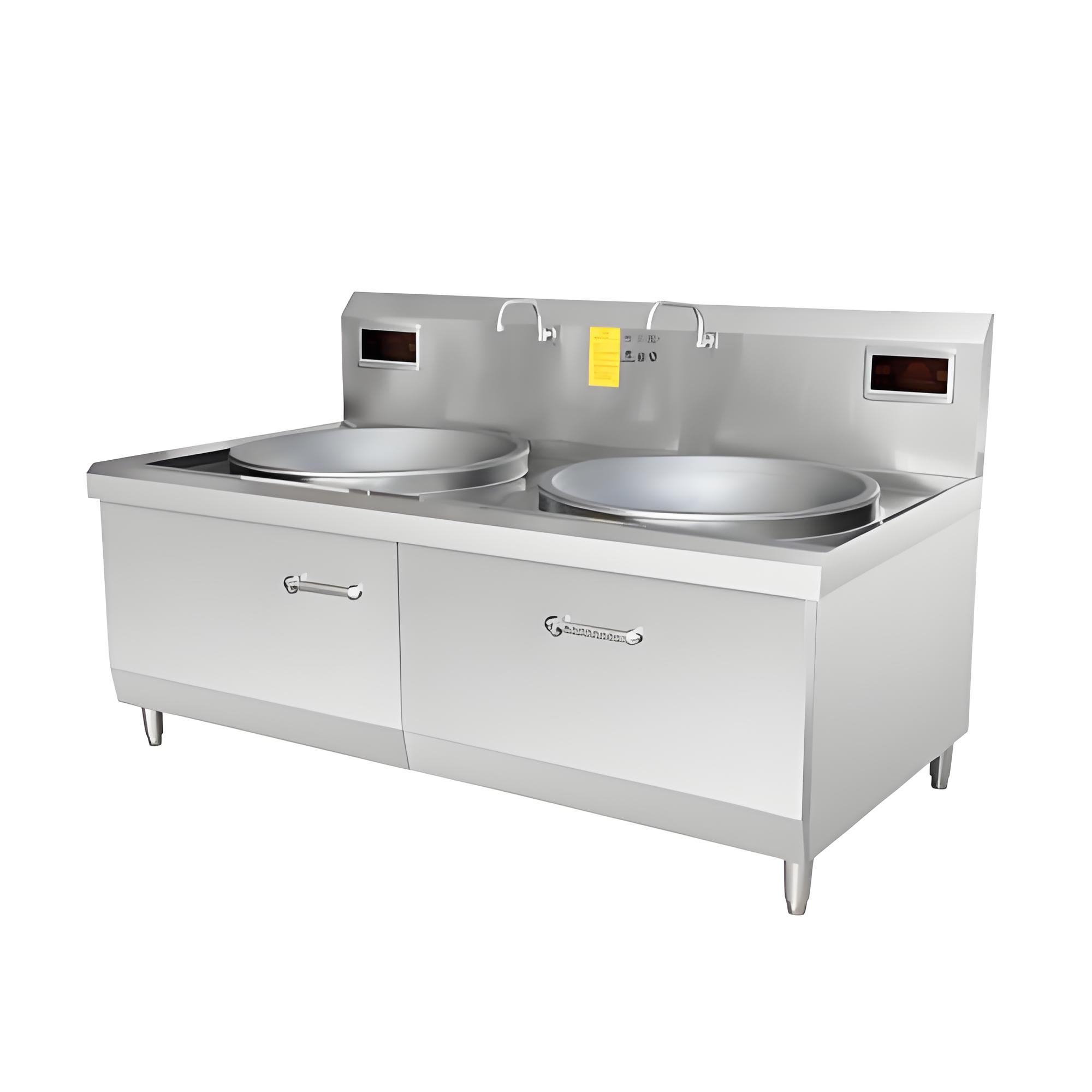
7. Rapid Temperature Changes
Induction cookers heat and cool rapidly, which is great for control but can cause splatter if not managed. Adding cold ingredients to a screaming-hot wok or pouring cold sauce into hot oil creates thermal shock, vaporizing liquids and sending oil flying.
Chefs I’ve worked with have reduced this by letting ingredients come to room temperature when possible and adding sauces gradually along the wok’s edge.
Practical Solutions to Reduce Oil Splatter
Now that we know the causes, let’s tackle solutions. These are strategies I’ve tested in real kitchens, from small takeout joints to large catering operations:
1. Optimize Heat Settings
Adjust power levels based on the dish. For most stir-fries, 60–80% of max power (e.g., 3000–4000W on a 5000W cooker) is sufficient to achieve high heat without burning oil. Reserve full power for specific techniques, like flash-frying or wok hei. Here’s a quick guide:
| Cooking Task | Power Level (% of Max) | Approx. Temp (°F) | Oil Behavior |
|---|---|---|---|
| Flash-Frying | 90–100% | 450–500°F | High risk of splatter |
| Stir-Frying | 60–80% | 350–400°F | Stable, minimal splatter |
| Simmering/Saucing | 30–50% | 250–300°F | No splatter |
Test different settings to find the sweet spot for your cooker and wok.
2. Dry Ingredients Thoroughly
Pat ingredients dry with paper towels or a clean cloth before cooking. Drain marinated meats or vegetables in a colander. Ensure the wok is dry after cleaning—heat it briefly to evaporate any moisture before adding oil. This step alone can cut splatter by 50% in many cases.
3. Choose the Right Wok
Use a ferromagnetic wok sized to match the burner. For a 12-inch induction burner, a 14–16-inch wok with a flat base works best. Carbon steel woks (1.5–2mm thick) are ideal for commercial use, balancing heat retention and responsiveness. Season the wok regularly to maintain its non-stick surface.
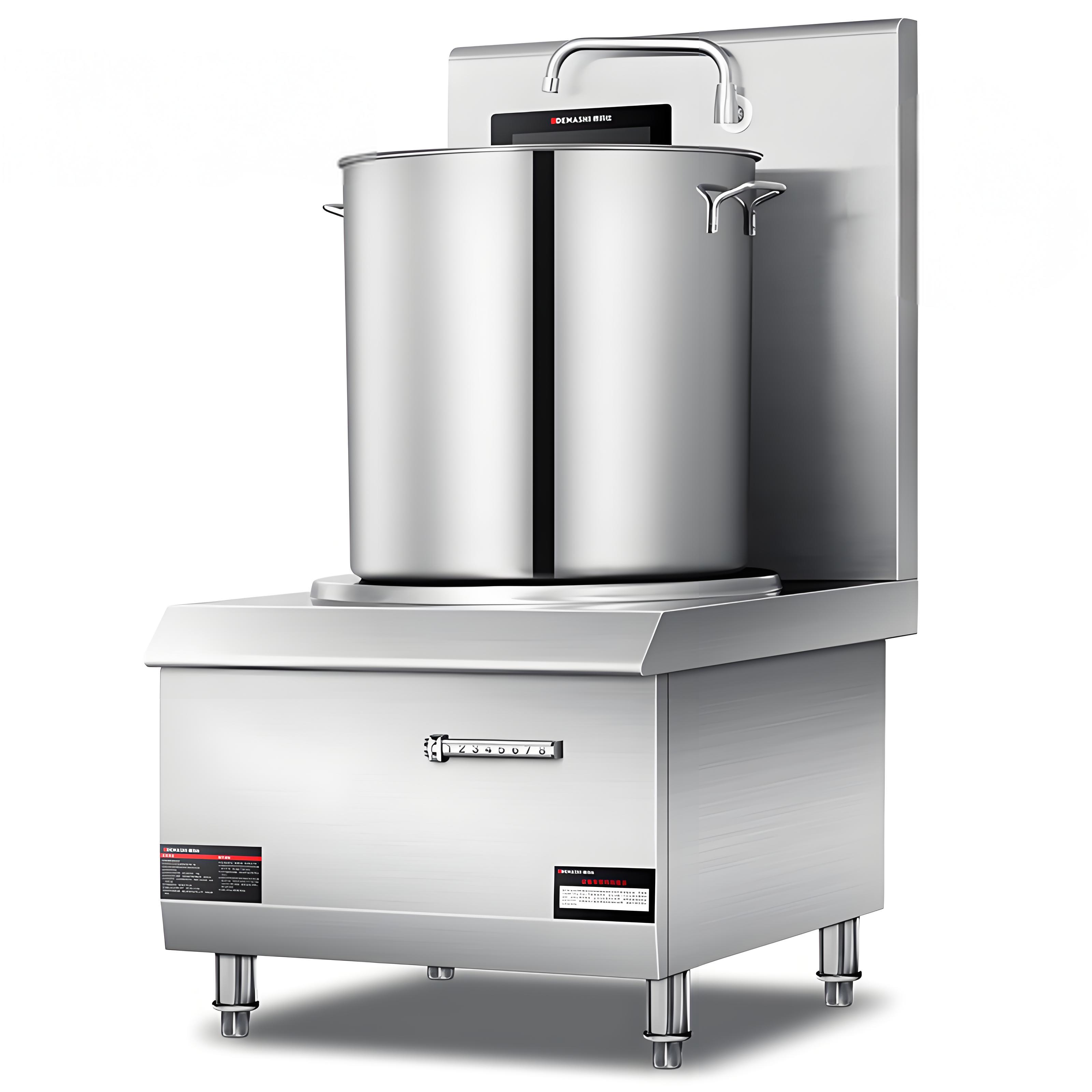
4. Cook in Smaller Batches
Avoid overcrowding by cooking in batches. For a 14-inch wok, keep ingredients to about 1–1.5 pounds per batch. This maintains high heat, promotes searing, and reduces moisture release. It may take slightly longer, but the cleaner kitchen and better results are worth it.
5. Use the Right Amount of Oil
Start with 1–2 tablespoons of high-smoke-point oil (like peanut or grapeseed) for a 14-inch wok. Swirl to coat the cooking surface evenly. If more oil is needed, add it in small increments along the wok’s edge to heat it before it hits the food.
6. Season and Maintain the Wok
Season your wok if it’s new or unseasoned. Heat it until it smokes, add a thin layer of oil, and wipe it evenly to build a patina. After each use, clean with hot water and a soft sponge (no soap), then dry and apply a thin oil layer to prevent rust. A seasoned wok reduces sticking and splatter.
7. Manage Temperature Transitions
Temper ingredients by letting them sit at room temperature for 10–15 minutes before cooking, if time allows. Add sauces or liquids gradually along the wok’s edge to warm them before they mix with hot oil. Preheat the wok on medium (50–60% power) for 1–2 minutes, then increase to high just before adding oil.
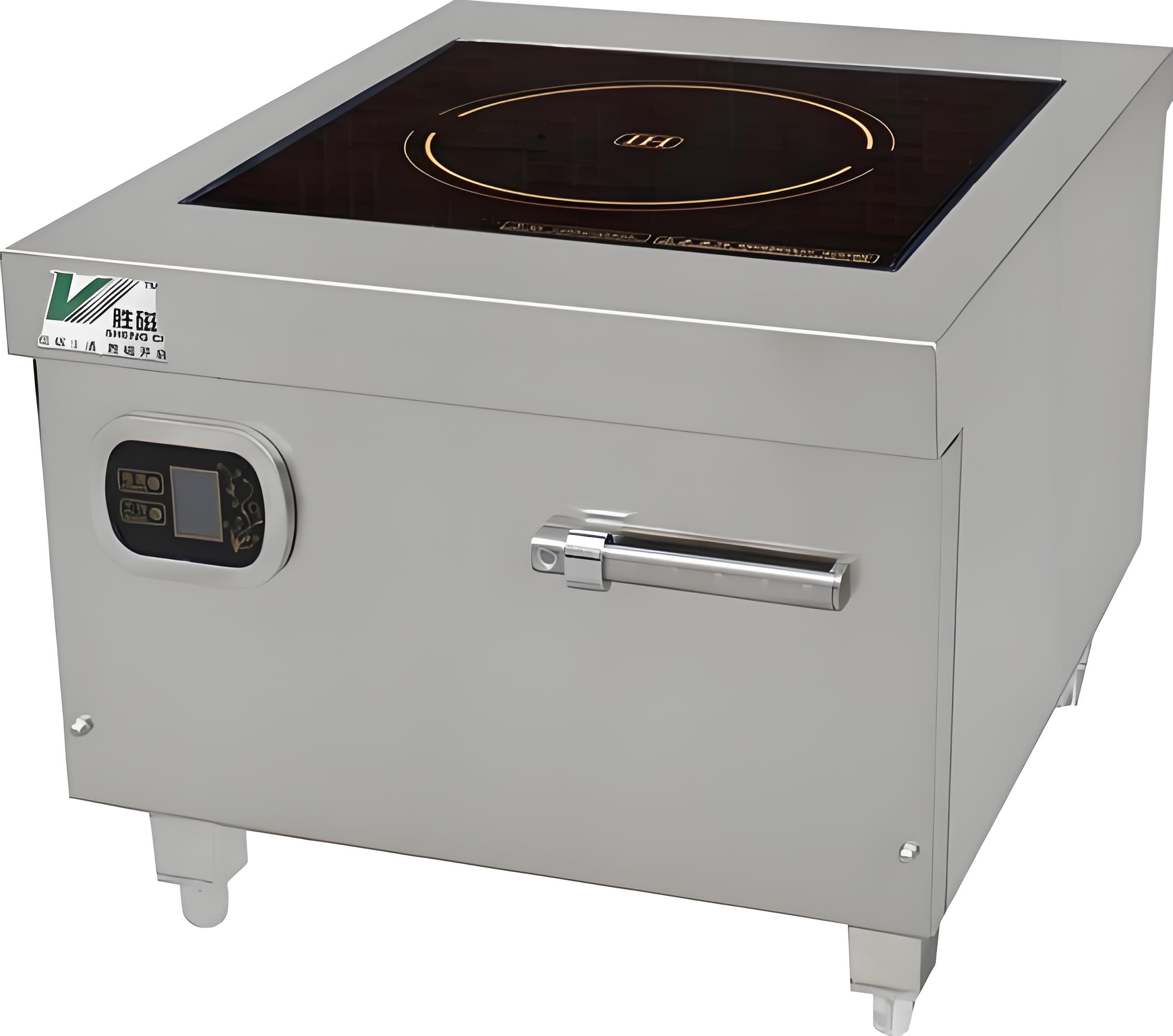
8. Use Splatter Screens
For dishes prone to splatter, a splatter screen (a fine mesh cover) can catch oil without trapping steam, keeping the kitchen cleaner. They’re inexpensive and widely available. I’ve seen these make a huge difference in high-volume kitchens.
9. Improve Ventilation
While not a direct fix for splatter, a strong exhaust system reduces oil vapor buildup, which can condense and drip, adding to the mess. Ensure your kitchen’s ventilation is up to code and cleaned regularly.
10. Train Staff on Best Practices
In commercial settings, staff training is key. Teach chefs and prep teams to dry ingredients, use appropriate power settings, and maintain woks. I’ve worked with restaurants that reduced splatter by holding brief training sessions during slow shifts.
Safety Considerations
Oil splatter isn’t just messy—it’s a safety hazard. Hot oil can cause burns, and spilled oil on floors creates slip risks. In one kitchen I consulted for, a staff member slipped on an oily floor, leading to a minor injury. To minimize risks:
Wear protective gear, like long sleeves and aprons.
Keep floors clean with absorbent mats and regular mopping.
Have a fire extinguisher nearby, as oil splatter can ignite if it hits an open flame or overheated surface.
Cost and Efficiency Impacts
Reducing splatter doesn’t just improve safety—it saves money. Splattered oil is wasted oil, and in a busy kitchen, this adds up. For example, losing 1 tablespoon of oil per dish in a restaurant serving 100 stir-fries daily equals 6.25 liters of oil monthly, costing $10–$20 depending on oil type. Cleaner kitchens also mean less time and money spent on cleaning supplies and labor.

Practical Tips for Chefs
Here’s a checklist I share with kitchen teams:
Test Oil Temperature: Drop a small piece of onion into the oil—if it sizzles steadily, the oil is ready. Violent bubbling means it’s too hot.
Invest in Quality Woks: Spend on durable, induction-compatible woks for long-term performance.
Monitor Burner Settings: Adjust power dynamically during cooking.
Keep a Splatter Screen Handy: Use it for high-risk dishes like deep-fried items.
Schedule Wok Maintenance: Season woks weekly in busy kitchens.
Common Mistakes to Avoid
I’ve seen these errors amplify splatter:
Using Full Power Constantly: Reserve max power for specific tasks.
Skipping Ingredient Prep: Always dry ingredients before cooking.
Using Non-Compatible Woks: Check wok compatibility with a magnet.
Ignoring Wok Maintenance: An unseasoned wok increases sticking and splatter.
One memorable case involved a takeout kitchen where splatter was so bad it damaged nearby equipment. The issue? Thin, unseasoned woks and wet ingredients. Upgrading to thicker carbon steel woks and improving prep practices solved the problem.

Conclusion
Oil splatter during stir-frying on a commercial induction cooker can be a headache, but it’s manageable with the right approach. By fine-tuning heat settings, using proper woks, and prepping ingredients carefully, you can keep your kitchen cleaner, safer, and more efficient. My years in the industry have taught me that small adjustments—like seasoning a wok or cooking in smaller batches—can yield big results. Try these tips in your kitchen, and don’t hesitate to experiment to find what works best for your setup. A splatter-free stir-fry is within reach!
Related Questions and Answers
Q: Can I use any wok on a commercial induction cooker?
A: No, only ferromagnetic woks (like carbon steel or cast iron) work. Test with a magnet—if it sticks, the wok is compatible. Ensure it’s sized to match the burner for even heating.
Q: Why does my wok splatter more than a gas stove?
A: Induction cookers heat faster and more intensely, amplifying splatter if the oil is too hot or ingredients are wet. Adjust power settings and dry ingredients to reduce splatter.
Q: How do I know if my oil is too hot?
A: If the oil smokes heavily or splatters violently when ingredients are added, it’s past its smoke point. Test with a small piece of food—it should sizzle steadily, not pop aggressively.
Q: Are splatter screens effective for commercial stir-frying?
A: Yes, they catch oil without trapping steam, reducing mess. They’re especially useful for high-volume kitchens or dishes with wet ingredients.
Q: How often should I season my wok in a busy kitchen?
A: In a commercial setting, season woks weekly or whenever sticking increases. Clean with hot water, dry thoroughly, and apply a thin oil layer after each use to maintain the patina.




